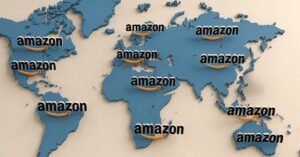
Amazon deal and coupon fee changes will offer greater control over deal durations, reduce upfront costs, and implement performance-based fees to enhance promotion effectiveness and customer reach.
Sellers struggle with rigid promotional fees and limited control over deal durations, making it hard to effectively test and optimize strategies.
This lack of flexibility and predictability in costs hinders sellers’ ability to adapt to market trends and maximize sales. High up-front costs and fixed deal durations limit experimentation, potentially leading to missed opportunities and increased financial risk.
A shift toward more flexible and performance-based pricing models can give sellers greater control over their promotional strategies. Lower upfront costs and variable fees tied to actual sales can help businesses optimize their marketing spend while ensuring their promotions deliver real results.
Analysis of Amazon Deal and Coupon Fee Changes
1. More flexible deal durations
Update:
Starting June 2, 2025, Best Deals can run on any day of the week, with durations ranging from 1 to 14 days (instead of being fixed).
Peak Event deal dates (e.g., Prime Day, Black Friday, Cyber Monday) remain fixed.
Impact on Sellers:
- Better alignment with consumer demand: Sellers can schedule deals around shopping trends, inventory levels, and promotional strategies.
- More control over marketing strategies: The ability to choose deal durations allows for more testing and optimization.
- Extended exposure opportunities: Running deals for longer periods may lead to higher sales volume and brand visibility.
2. Performance-based promotion and deal fees
Update:
Fees for promotions and deals will now be linked to sales performance instead of a flat upfront fee.Upfront deal fees are reduced, and variable fees (capped) are introduced to ensure sellers benefit from high-performing deals.
Merchandising visibility will affect fees—more prominent placements will have higher fees, while less visible promotions will have lower fees. In his LinkedIn newsletter, Todd Welch highlighted how the recent changes to deal and coupon fees make running promotions on various products more cost-effective for sellers.
Impact on Sellers:
- Lower initial investment: The reduction in upfront costs makes it easier to test different deal types.
- Incentive for successful promotions: Sellers will pay more only if the deal generates higher sales, reducing the financial risk of underperforming deals.
- Strategic deal planning: Choosing the right deal type and placement can optimize ad spend and maximize exposure.
3. Lower fees for best deals and lightning deals
Update:
Upfront fees for Best Deals and Lightning Deals are dropping from $300/$150 per deal to $70 per day plus a 1.0% fee on deal sales (capped at $2,000).
These deals receive high visibility, including placement on deal pages, search results, and product detail pages.
Impact on Sellers:
- Cost savings on promotions: Sellers now pay a significantly lower upfront fee, making these deals more accessible.
- Higher ROI potential: The variable fee structure ensures sellers only pay more if they generate strong sales.
- Greater visibility boost: With premium placements in search results and deal pages, these promotions can drive higher traffic and conversions.
4. Updated coupon fee structure
Update:
Coupon fees will change from $0.60 per unit sold to a $5 upfront fee per coupon plus 2.5% of coupon sales.
Most sellers will see lower per-unit fees, making coupons more cost-effective.
Impact on Sellers:
- Lower per-unit coupon costs: This new pricing model reduces expenses for high-volume sales, making coupons more scalable.
- More predictable costs: Instead of a per-unit charge, sellers can budget more effectively with a fixed upfront fee and a percentage-based cost.
- Encourages experimentation: With lower fees for many sellers, testing different coupon strategies (e.g., discount levels, target audiences) becomes easier.
5. Prime day promotion fee changes
Update:
Prime Exclusive Discounts (PEDs) will increase from $50 to $100 per PED to reflect the larger scale of Prime Day 2025.
Best Deals and Lightning Deals fees remain the same as 2024 ($1,000 and $500, respectively).
Coupons maintain the same fee structure as non-Peak days ($5 per coupon plus 2.5% of coupon sales).
Impact on Sellers:
- Increased costs for PEDs but greater exposure: The higher fee for PEDs suggests Amazon expects stronger performance during Prime Day.
- No increase for other deal types: Best Deals and Lightning Deals remain unchanged, allowing sellers to plan promotions without additional costs.
- Prime Day remains a high-reward event: Sellers can expect higher traffic and conversion rates during the extended Prime Day shopping period.
Amazon deals and coupons action plan
Amazon Deals and Coupons come with specific cost considerations, performance expectations, and exemptions that every seller should be aware of in order to implement a marketing action plan.
Amazon deals
Simon Data"Offering a discount can make customers feel like they are "gaining" something, even if they are just paying less for it."
1. Plan your deal strategy
Use Deals strategically to increase sales and visibility while clearing excess inventory.
Consider Lightning Deals and Best Deals for added exposure through the Deals Badge. Review the Deal fee upfront when scheduling to ensure it aligns with your budget.
2. Understand deal fees & charges
Fees apply once a Deal has run and will be deducted automatically, similar to FBA (Fulfillment by Amazon) fees. If a Deal is canceled while running, the full fee still applies.
3. Manage low-performing deals
Sales are not guaranteed, and Amazon does not provide refunds for underperforming Deals.
Running a Deal does not ensure Featured Offer placement.Separate fees apply when running multiple promotions simultaneously.
4. Know when fees are waived
Fees are not charged if the Deal is canceled before the start time. If all ASINs in a Deal are suppressed before it runs, no fees apply.
Amazon coupons
Beyond Philosophy"People respond more to “SAVE 30%” than “SAVE $2.” The bigger the number, the better the deal seems."
1. Design your coupon plan
Coupons are effective in boosting sales, retaining loyal customers, and enhancing product visibility. Choose from Standard, Subscribe & Save, or Reorder & Save Coupons based on your objectives, and verify that the fee displayed during Coupon creation aligns with your budget.
2. Learn about coupon fees
Fees are incurred when customers redeem Coupons, regardless of the audience targeted. Charges are calculated based on the post-discount price, and these fees are deducted from your account within 14 days of the promotion’s conclusion.
3. Coordinate multiple promotions
Coupon fees are distinct from Deal fees, meaning charges apply separately if you run both. Refunds aren’t provided for returned items, but detailed fee breakdowns can be accessed in Seller Central under Payments > Transaction View > Service Fees.
Key insights from the video above:
Overlapping discounts can unintentionally stack, leading to much higher discounts than intended, which can hurt profitability.
Avoid running multiple promotions targeting the same audience segments, as some customers may qualify for more than one and receive excessive discounts.
4. Understand fee exemptions
Fees are waived for promotions canceled before their scheduled start or if all ASINs in a Coupon remain suppressed throughout the promotion period. Ensure you meet these criteria to avoid unnecessary charges.
For Amazon sellers looking to optimize their promotions, understanding these cost structures is essential. Strategic planning, especially with the expertise of an Amazon agency, can help sellers balance costs and maximize the impact of their Deals and Coupons.






